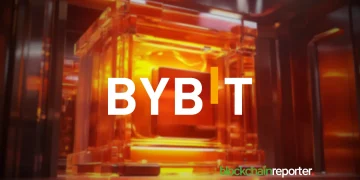- Understanding the Need
- Cross-chain Solutions
- Layer-2 Scaling Solutions
- Implications and Benefits
- Challenges
- Conclusion
In the world of blockchain and cryptocurrencies, two pressing challenges face many projects: interoperability and scalability. To combat these issues, there have been significant developments in the realms of cross-chain solutions and layer-2 scaling. This article will delve deep into both concepts, exploring their significance, mechanisms, and potential implications for the future of the decentralized digital landscape.
Understanding the Need
Before diving into the details, it’s crucial to understand why we need these solutions in the first place.
- Interoperability: Different blockchain networks operate in isolation. For instance, Ethereum and Bitcoin are two distinct networks with no native mechanism to communicate or transact directly. As the number of blockchain projects grows, the need for these networks to interact seamlessly becomes critical.
- Scalability: Most early blockchains, like Bitcoin, face scalability issues. Their design often restricts the number of transactions they can process per second. This limitation can lead to network congestion, slower transactions, and higher fees.
Cross-chain Solutions
Cross-chain solutions aim to bridge different blockchain ecosystems, enabling them to work together.
a. Federated Bridges: These are dedicated nodes that control the transfer of information and assets between two chains. The bridge relies on members to vote or validate transactions from one chain to another.
b. Hash Time-Locked Contracts (HTLCs): They ensure that the transaction gets executed only when certain conditions are met, allowing for trustless atomic swaps between chains.
c. Polkadot’s Relay Chains: Polkadot uses a relay chain to interconnect various blockchains (known as parachains). This allows them to share information and value seamlessly.
d. Cosmos’s Inter-Blockchain Communication (IBC): Cosmos employs a hub-and-spoke model, where multiple chains connect to a central hub, allowing for asset and data transfer.
Layer-2 Scaling Solutions
Layer-2 solutions are secondary frameworks or protocols created on top of an existing blockchain (the layer-1) to enhance its scalability.
a. Lightning Network (for Bitcoin): This creates off-chain payment channels that allow users to transact without recording every single transaction on the main chain. Only the final settlement is recorded, reducing congestion and fees.
b. Plasma (for Ethereum): Plasma is a series of smart contracts that run on top of the main Ethereum blockchain. It allows for the creation of child chains, each capable of handling its own transactions and smart contracts.
c. Rollups: Rollups are solutions where transaction data is processed off-chain and only the final state or a summary is posted to the main chain. Two primary types of rollups are in use:
- Optimistic Rollups: They assume that transactions are correct unless challenged.
- zk-Rollups: They use zero-knowledge proofs to validate transactions off-chain.
d. State Channels: Similar to payment channels in the Lightning Network, state channels allow users to transact off-chain. It’s versatile and can be used for any type of state change (not just token transfers).
Implications and Benefits
- Increased Throughput: Layer-2 solutions can significantly increase the number of transactions a blockchain can handle, sometimes by orders of magnitude.
- Reduced Fees: By moving many operations off the main chain, costs can be greatly reduced, making microtransactions viable.
- Greater Interconnectivity: Cross-chain solutions pave the way for a more interconnected and interoperable blockchain universe, where assets and data can flow seamlessly between platforms.
- Flexibility: These solutions allow for experimentation. New algorithms or techniques can be tested on a layer-2 or a bridged chain without jeopardizing the security or stability of the main chain.
Challenges
- Complexity: Implementing these solutions often adds complexity, which can introduce potential security vulnerabilities.
- Centralization Risks: Some solutions, especially certain bridges or federated systems, can introduce centralization, which is often antithetical to the ethos of decentralization in blockchain.
- User Adoption: For these solutions to be effective, they require wide adoption. Getting users to migrate or adopt new systems can be challenging.
Conclusion
Cross-chain and layer-2 solutions are essential innovations in the blockchain space, addressing key challenges of interoperability and scalability. As the ecosystem evolves, it’s expected that these solutions will play a pivotal role in the mainstream adoption and utility of blockchain technologies. They represent the industry’s proactive approach to solving its inherent issues, showcasing the adaptability and resilience of this groundbreaking technological field.























